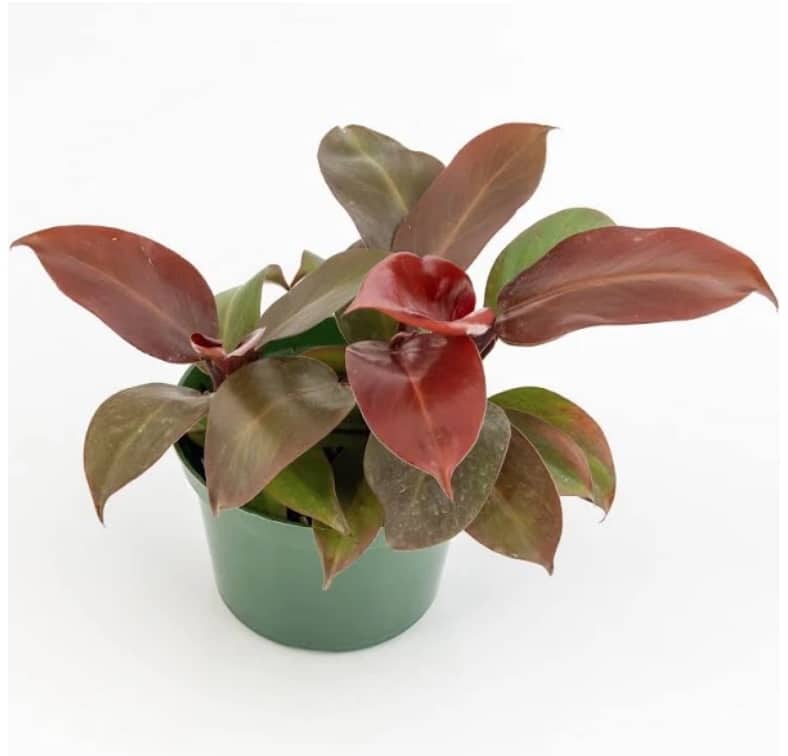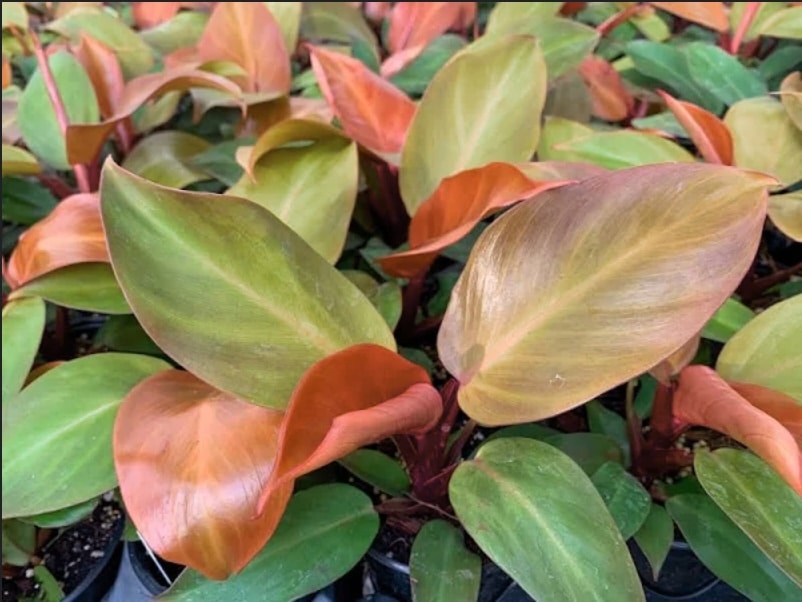Philodendron McColley Finale is a popular Philodendron species known for its large colorful leaves and rapid growth. It’s a hybrid that’s been developed using other philodendrons plants that originate from South America.
This guide will teach you how to care for a Philodendron McColley’s Finale, including tips on watering, fertilizing, and propagation. You will also find out when it is time to transplant your Philodendron McColley and how to propagate it if necessary.
Whether you are a beginner or experienced gardener, this article will tell you everything you need to know about growing a Philodendron McColley’s Finale!
What is a Philodendron McColley’s Finale?

Philodendron McColley Finale is a beautiful philodendron that can be grown as a houseplant or an outdoor plant. It’s known for its large, attractive leaves that are deep green, yellow, and burgundy to red. The plant is evergreen with a tropical look that will stand out in any setting.
Philodendron McColley Finale is a hybrid plant that’s part of the Araceae family. It’s also commonly referred to as McColley’s hybrid Finale or just philodendron McColley. These plants are generally grown indoors and can reach one to three feet in height. They have large glossy leaves with a length of approximately 5 to 8 inches and a width of 5 inches. The plant is fast-growing and has air purification properties.
It’s important to note that Philodendrons are poisonous plants; ingesting the leaves can cause irritation of the digestive system, drowsiness, nervousness, vomiting, or diarrhea. Improper handling of the plants can also cause irritation, redness, and swelling. If you have small children or pets, make sure to put your plant in a secure spot that is out of their reach.
How to care for a Philodendron McColley’s Finale?
Philodendron McColley’s Finale can make an impressive houseplant for your home or office. They can also be grown outdoors in USDA zones 9 to 12. These plants are easy to care for; just follow these simple tips:
Sunlight requirements
It would help if you placed your Philodendron McColley’s Finale in bright, indirect sunlight. Avoiding direct exposure to sunlight will reduce leaf bleaching and scorching of the leaves.
As philodendrons grow on the forest floor, they are overshaded by larger shrubs and trees. For this reason, they also do well in low-light areas.
Watering needs
Philodendron McColley’s Finale should be planted in soil with good drainage. Be careful not to overwater your plant or let it sit in water for extended periods of time, as this can cause root rot. Philodendrons need to be watered regularly but should be left to dry out between waterings. You should always feel the soil to see where your plant needs to be watered or not.
Humidity
Philodendrons do well with average humidity levels of between 40 and 50%. You can increase humidity levels by misting your plant regularly or placing it on a tray filled with pebbles and water. Alternatively, group tropical plants together or put your philodendron in the bathroom or kitchen, where it will be exposed to higher humidity. If you have an extensive collection of tropical plants, you may also like to invest in a humidifier.
Fertilization
Philodendron McColley’s Finale can be fertilized with a diluted liquid fertilizer every two weeks during the summer growing season and once a month during the winter. Alternatively, use a fertilizer that’s been formulated for tropical plants once a month.
Soil type and pH range
Use a well-drained potting mix that’s been formulated for tropical plants, or add some perlite and sand to a standard house plant soil. Philodendron McColley Finale grows best when the earth has a pH of between 6.1 to 7.5.
Repotting
Every two or three years is sufficient for repotting Philodendrons, but you will want to re-pot your plant if it outgrows its pot and becomes root bound. You should only report your plant if the roots are completely filling the pot; if not, you can hold off until the following year.
Use a pot that is only slightly larger than the one your Philodendron McColley’s Finale was growing in before. You should also use well-draining soil to prevent root rot. When transplanting your Philodendron you should wear gloves and wash your hands thoroughly to avoid contact with sap that can irritate your skin.
Remove as much of the old potting mix as possible before planting it in a larger container filled with new, high-quality potting soil. Water thoroughly after transplanting and place your plant in a sunny location to speed up the process of adjusting to its new environment.
Temperature
As Philodendron McColley’s Finale is a tropical plant, it needs warm temperatures in order to thrive. This plant can be grown outdoors in USDA zones 9 to 12. The ideal temperature is 60˚F to 70˚F during the day and 55˚F to 60˚F at night.
Pests and disease
Philodendrons are susceptible to any pest that affects common houseplants, such as spider mites, mealybugs, and aphids. Infestations can be easily treated using an insecticidal spray, liquid soap, and water or neem oil.
Philodendron McColley’s Finale can develop root rot from overwatering or from being kept in areas with poor drainage. The leaves can also suffer from fungal infections if they have been soaked while misting.
How to propagate a Philodendron McColley’s Finale?
Philodendron McColley’s Finale can be propagated by stem cuttings. You will need 4 to 6-inch pieces of stems and a sterile cutting tool for this task. After you’ve taken the cuttings, they can be planted in a mixture of soil, perlite, and sphagnum moss. Keep the soil at an ideal level of moisture, but do not allow it to become soggy. Roots and new leaves will begin to grow in a few weeks.
Conclusion
Philodendron McColley’s Finale is easy to grow and can make a beautiful addition to your home or office. It does not require frequent maintenance, but you should ensure it’s watered correctly and misted daily or placed in a humid location. You should also keep your plant away from direct sunlight and heat sources.
